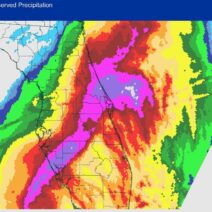The majestic presence of mountains has long captivated human imagination. Their towering peaks, often shrouded in mist and clouds, evoke a sense of mystery and wonder. However, beyond their awe-inspiring beauty, mountains play a pivotal role in influencing climate patterns. This influence is multifaceted, affecting everything from local weather conditions to global climate systems. Understanding these dynamics is crucial for both ecological and meteorological sciences.
Mountains act as natural barriers, impacting the flow of atmospheric winds and, consequently, precipitation patterns. When moist air encounters a mountain range, it is forced to ascend. This ascent leads to a cooling effect; as the air rises, it expands and cools, which can result in condensation and precipitation on the windward side of the mountains. This phenomenon is known as orographic lift. Consequently, the side of the mountain that faces the prevailing winds tends to receive significantly higher amounts of rainfall. For instance, the western slopes of the Sierra Nevada mountain range in California are notably lush and verdant, supported by the moist air from the Pacific Ocean. In stark contrast, the leeward side, known as the rain shadow, experiences drastically reduced precipitation, leading to arid conditions.
This rain shadow effect is a powerful illustration of how mountains can divide climates in relatively small geographic areas. In the United States, the Rockies function similarly; they create a rain shadow over the Great Plains, a region characterized by its dry conditions. Such disparities in climate resulting from mountain ranges dictate biodiversity and land use across these regions.
The interplay between mountain geography and climate also extends to temperature regulation. Mountains tend to have cooler climates than lower-lying areas due to their elevated altitude. This temperature variation is particularly pronounced in higher altitudes, where the average temperature declines by about 6.5 degrees Celsius for every kilometer gained in height. Consequently, high-altitude regions often experience different climatic conditions compared to the valleys below them. This altitude-driven temperature gradient leads to a diversity of ecosystems ranging from temperate forests at lower elevations to alpine tundras at the summits.
Moreover, mountains initiate a fascinating array of microclimates. These localized climatic conditions can differ drastically from the surrounding regions and are influenced by factors such as elevation, slope orientation, and even soil type. For example, north-facing slopes in the Northern Hemisphere retain moisture and are often cooler and more verdant than south-facing slopes, which receive more sun and tend to be warmer and drier. Such microclimatic effects are essential for various flora and fauna, allowing distinct species to thrive in niches that would otherwise be inhospitable.
Additionally, mountains play an integral role in hydrological cycles. They act as crucial watersheds, capturing snow and rain, which then feed rivers and streams that extend far beyond their peaks. During warmer months, the snowmelt from mountain ranges provides essential water resources for agriculture, drinking supplies, and ecosystems downstream. The Colorado River, for instance, is heavily influenced by the snowpack in the Rocky Mountains, which serves as a vital water source for millions of people in the arid Southwest.
Climate change further complicates the relationship between mountains and climatic effects. Global warming has led to altered precipitation patterns, increasing the unpredictability of water resources derived from mountain snowpack. In many regions, the snowline is receding, leading to earlier snowmelt and enhanced risk of drought during warmer months. Such shifts not only threaten agricultural production but also exacerbate ecological stress throughout associated watershed areas. Biodiversity loss in mountain ecosystems is an imminent threat, as species that have adapted to specific climatic conditions are forced to migrate or face extinction.
Furthermore, human activity has begun to exacerbate these natural processes. Urbanization and deforestation in mountainous regions can alter local climates significantly. The introduction of impervious surfaces and the removal of vegetation affect heat retention and moisture release, leading to localized warming trends. These changes can intensify existing climatic conditions, creating cycles of flood and drought that disrupt established ecosystems and human livelihoods alike.
In conclusion, the relationship between mountains and climate is a complex interplay of geography, atmospheric dynamics, and ecological interconnectivity. As natural barriers, temperature regulators, and vital watersheds, mountains serve as pivotal elements in shaping climatic conditions both locally and globally. Understanding their influence is crucial, particularly in the context of climate change and human impacts. The urgency of protecting these natural structures becomes increasingly evident as they face threats that can disrupt not only local ecosystems but also global climatic systems. In appreciating the grandeur of mountains, we also recognize their integral role in maintaining the balance of our environment.






